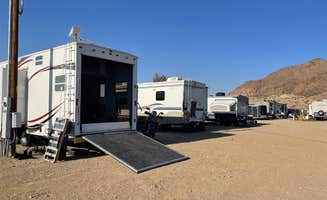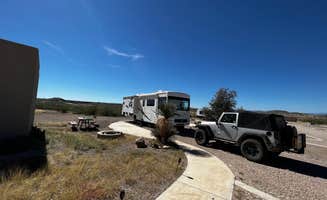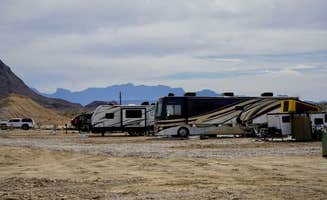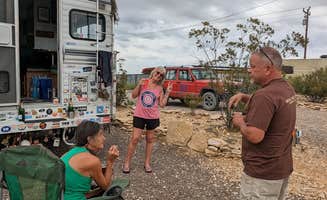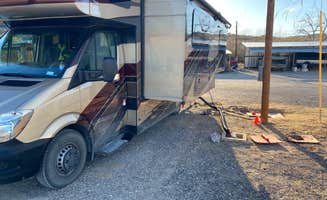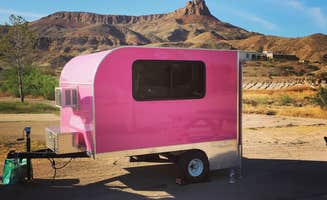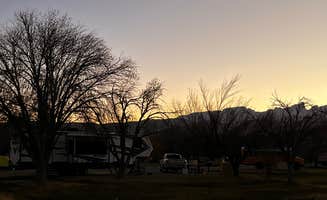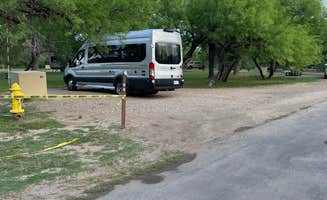Rio Grande Village RV Campground provides limited full hook-up sites less than a mile from the Rio Grande. Sites accommodate vehicles up to 40 feet long, though water conservation measures often restrict campground usage during dry periods. Winter temperatures range from 60-75°F with occasional overnight freezes. Several RV parks around the national park boundary offer alternative camping options with varying levels of amenities.
What to do
Hike the South Rim Trail: The 12-mile loop trail starting from Chisos Basin Campground offers panoramic views of the entire park. "The South Rim trail was AMAZING! Definitely would recommend if you're looking for a longer hike with rewarding views. Even though it was spring break season and very busy in the park, we didn't see too many people on this trail," notes a Chisos Basin Campground visitor.
Watch wildlife at dawn: Early morning at campgrounds is prime time for viewing desert wildlife. "The view of the Chisos Mountain is fantastic, especially at dawn," reports a camper at BJs RV Park. Some campers spot javelinas crossing roads near the north entrance. Coyote howls can be heard at night in western campsites.
Explore nearby ghost towns: Terlingua ghost town features historic buildings, art galleries, and dining options within walking distance of some campgrounds. "Terlingua ghost town itself is fun to explore. Many visitors flock to the Starlight Theater. The art gallery is also worth the visit," notes a visitor. Walking trails through the ghost town connect to several nearby RV parks.
What campers like
Dark sky viewing: Big Bend ranks among the darkest locations in North America for stargazing. "Maverick Ranch is a dark sky park, so cameras are supposed to have exterior lights off after 9 or 10pm so everyone can enjoy the stars," notes a visitor to Maverick Ranch RV Park. The best stargazing occurs during new moon periods when the Milky Way becomes clearly visible.
Shower facilities: After dusty desert adventures, clean shower facilities become a priority. "Bathroom and shower area are new and nice," reports a camper at Paisano Village RV Park & Inn. Another notes, "The rain shower is amazing!" Pay showers at several parks cost $2 for 6-minute sessions, making private shower facilities a valued amenity.
Local food options: Food trucks and small restaurants near campgrounds provide convenient dining alternatives. "The Little Dipper food truck has amazing food," notes a camper. "TiVo's restaurant is right next door and they had really good homemade Mexican food," mentions another visitor. The Frito Pie at cafes near Terlingua receives consistent praise from campers seeking quick meals.
What you should know
Weather extremes: Temperature fluctuations between day and night can exceed 30 degrees. "It was chilly in the mornings and at night without the sun to warm you up—long pants and a light jacket were perfect. It warmed up to shorts and T-shirt/tank weather in the afternoons with the sun," shares a camper at Chisos Basin. The higher-elevation campgrounds experience cooler temperatures year-round.
Limited connectivity: Most campgrounds have minimal or no cell service. "Be prepared for slow internet and NO Cell Signal at all," warns a camper at Stillwell Store & RV Park. Visitors needing connectivity should verify options before arrival. Some campgrounds with WiFi have limited range that doesn't extend to all sites.
Water constraints: Water pressure can be limited at campgrounds using well water. "Maybe 10-12 PSI at best. It is well water and even with a high-end filter, even the water tasted 'dusty,'" notes a camper at Stillwell Store. Several campgrounds implement water conservation measures during dry periods, occasionally restricting shower usage.
Tips for camping with families
Choose campsites with shade structures: Summer temperatures regularly exceed 100°F, making shade essential. "Definitely recommend trying to get a campsite with a canopy top for shade, ours did not have one and we were very jealous of everyone else that did," advises a visitor at Chisos Basin Campground. Most developed campsites include picnic tables with metal shade canopies.
Pack extra water containers: Limited water availability necessitates bringing additional water storage. "Coming from the Atlantic Coast, the insanely arid dusty air was a new experience," notes a camper at Study Butte RV Park. Children require more frequent hydration in the desert environment. The closest substantial grocery stores are 80+ miles away in Alpine or Marathon.
Consider shoulder seasons: Avoid summer heat by visiting March-April or October-November. "March is apparently the busiest month in Big Bend NP," notes a visitor. Spring break brings significant crowds but offers milder temperatures ideal for family activities. Winter holidays (December-January) can offer pleasant daytime temperatures with fewer visitors.
Tips from RVers
Measure clearances carefully: Road restrictions limit access to some park areas for larger rigs. "The winding road to Chisos Basin restricts RVs over 24 feet in length," notes a camper. Sites at Rio Grande Village accommodate vehicles up to 40 feet, while parks outside national park boundaries typically handle larger rigs without difficulty.
Level your site before setup: Many campsites require significant leveling. "Our site, at least where we stopped in the long space, was significantly unlevel, both side-to-side and front-to-back," notes a visitor. Bring extra leveling blocks as desert sites often feature uneven terrain, especially at campgrounds with gravel surfaces.
Check sewer connection height: Some RV parks have raised sewer connections that complicate tank emptying. "The sewer connections are raised high above the surface, resulting in limited actual draining of your tanks even when using the common tapered hose guides we all use," warns a camper. Additional hose supports may be needed to create proper drainage slope at certain campgrounds.



